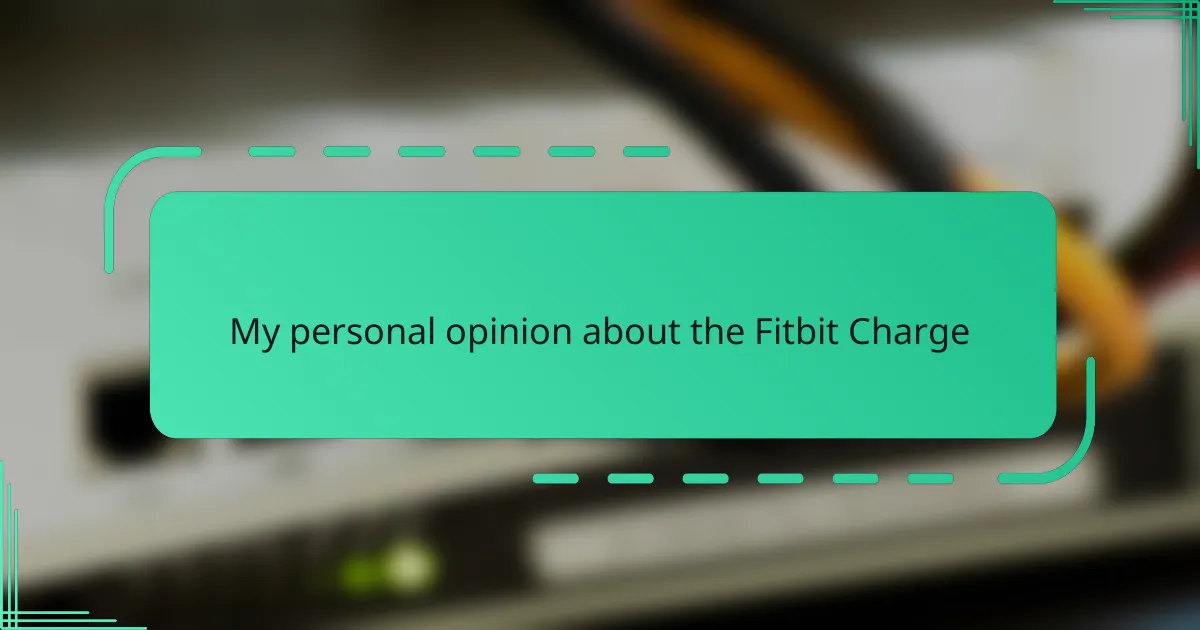Key takeaways
- The Fitbit Charge effectively tracks heart rate, sleep stages, and physical activity, promoting user awareness and encouraging healthier habits.
- It translates vague health goals into tangible milestones, fostering motivation and consistency without being intrusive.
- The device’s long battery life and integration of fitness tracking with smartphone notifications enhance usability compared to competitors.
- Challenges include occasional syncing issues and comfort during extended use, highlighting the importance of both functionality and wearability in fitness devices.
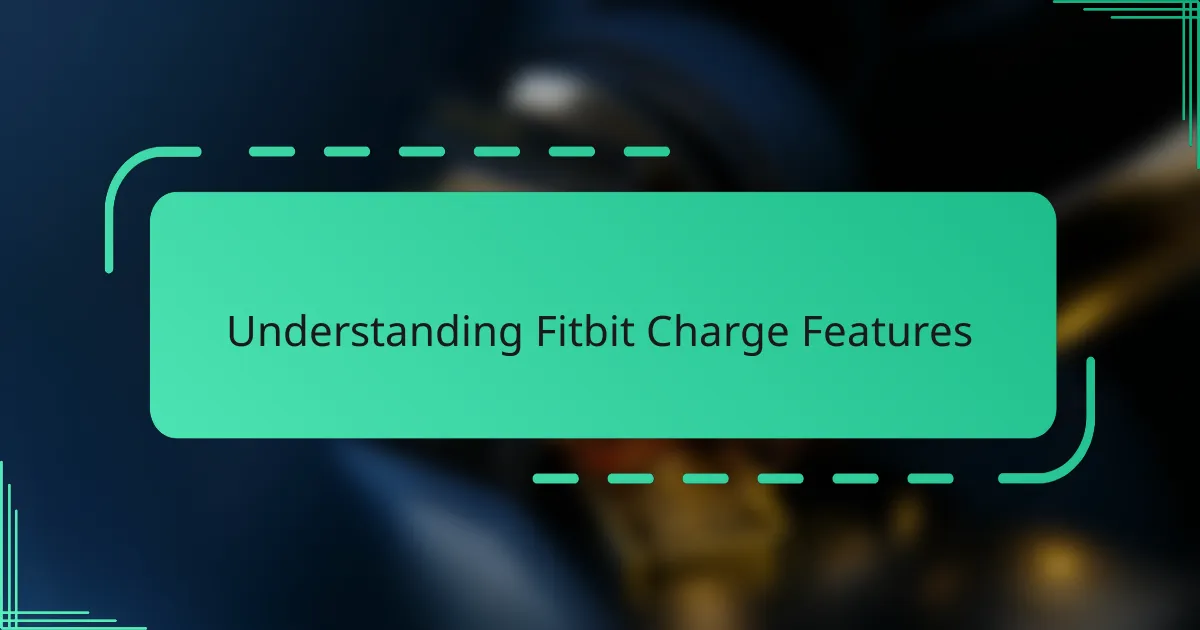
Understanding Fitbit Charge Features
When I first explored the Fitbit Charge, I was genuinely impressed by how many features it packed into such a sleek design. The ability to track heart rate continuously and monitor sleep stages made me more aware of my daily rhythms than ever before. Have you ever wondered how your body truly responds to stress or rest? This device gives you a clear picture, and that insight felt surprisingly empowering to me.
What struck me most was the step and calorie tracking, which seemed basic at first but quickly became a motivator. Seeing the numbers tick up during a casual walk made me want to move more, turning simple activities into mini celebrations. It’s amazing how a small wristband can subtly nudge you toward better habits without feeling intrusive or overwhelming.
I also appreciated how the Fitbit Charge integrates smartphone notifications, so I stayed connected without constantly checking my phone. That feature, combined with its water resistance, made it feel like a seamless part of my daily life rather than just a fitness tracker. The practicality of these features convinced me that the Fitbit Charge is designed with real-life usability in mind.
![]()
Evaluating Fitness Tracker Benefits
One benefit that really stood out to me was how the Fitbit Charge turned abstract health goals into something tangible. Instead of vague intentions like “exercise more,” I found myself chasing concrete targets—those daily step counts and calorie burns gave me a real sense of accomplishment. Have you ever noticed how breaking big goals into smaller, trackable milestones can boost your motivation? For me, this tracker did exactly that.
Another advantage I can’t overlook is the way it quietly encourages consistency without judgment. It’s not a coach yelling at you, but more like a friendly reminder nudging you to move just a bit more or to wind down for better sleep. I discovered that this gentle approach helped me stick with healthier habits in the long run, which is often the hardest part.
From my experience, the Fitbit Charge goes beyond just counting numbers—it fosters self-awareness. When I looked carefully at my daily and weekly patterns, it sparked interesting questions: Why was my evening heart rate so high? What caused that restless night’s sleep? This kind of insight made me feel more in control of my wellbeing, rather than guessing blindly.
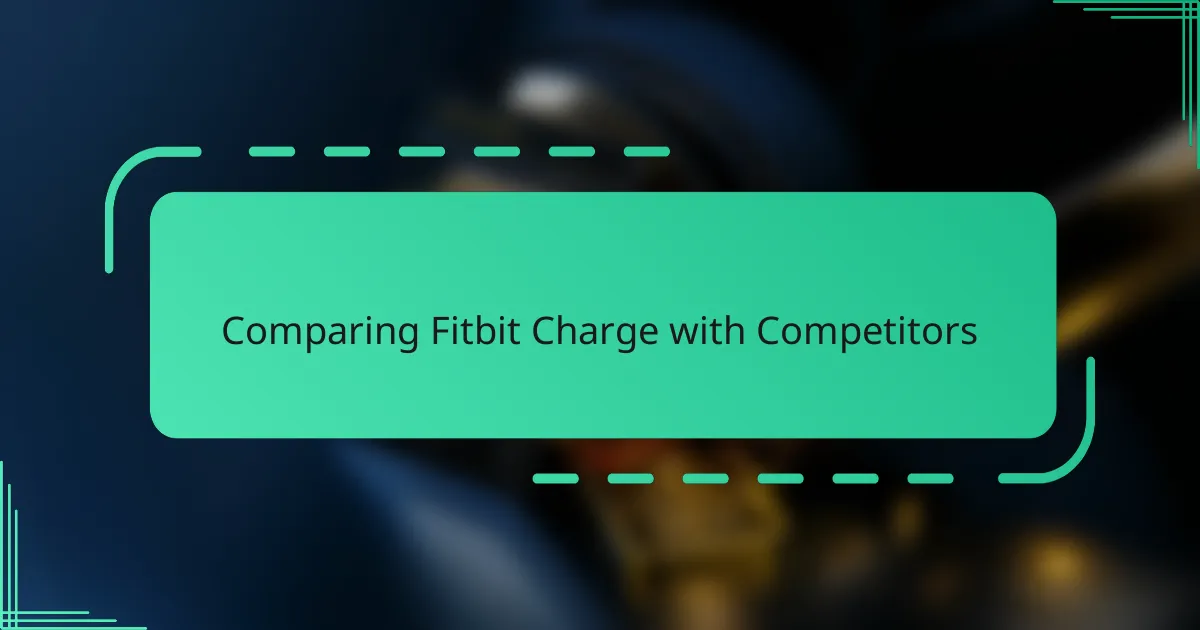
Comparing Fitbit Charge with Competitors
When I started comparing the Fitbit Charge with other fitness trackers, I noticed how its battery life really stood out. While some competitors needed daily charging, the Charge comfortably lasted several days, which felt like less hassle during my busy routine. Have you ever been frustrated by a device that dies just when you need it most? That’s why this simple advantage made a big difference to me.
I also found that the Fitbit Charge’s combination of fitness tracking and smart notifications gave it an edge over simpler trackers. Some models focused only on steps or heart rate, but Fitbit wrapped everything up nicely, making it feel like a true companion rather than just a gadget. From my perspective, having those features in one place meant fewer devices to worry about and a more cohesive experience overall.
However, I did notice that some competitors offered more advanced metrics like blood oxygen levels or GPS tracking at a similar price point. This made me wonder—if I were a runner or wanted detailed health data, would the Fitbit Charge still be my top pick? For casual users like me, its balance of features and ease of use hit the sweet spot, but the choice really depends on your personal goals and lifestyle.
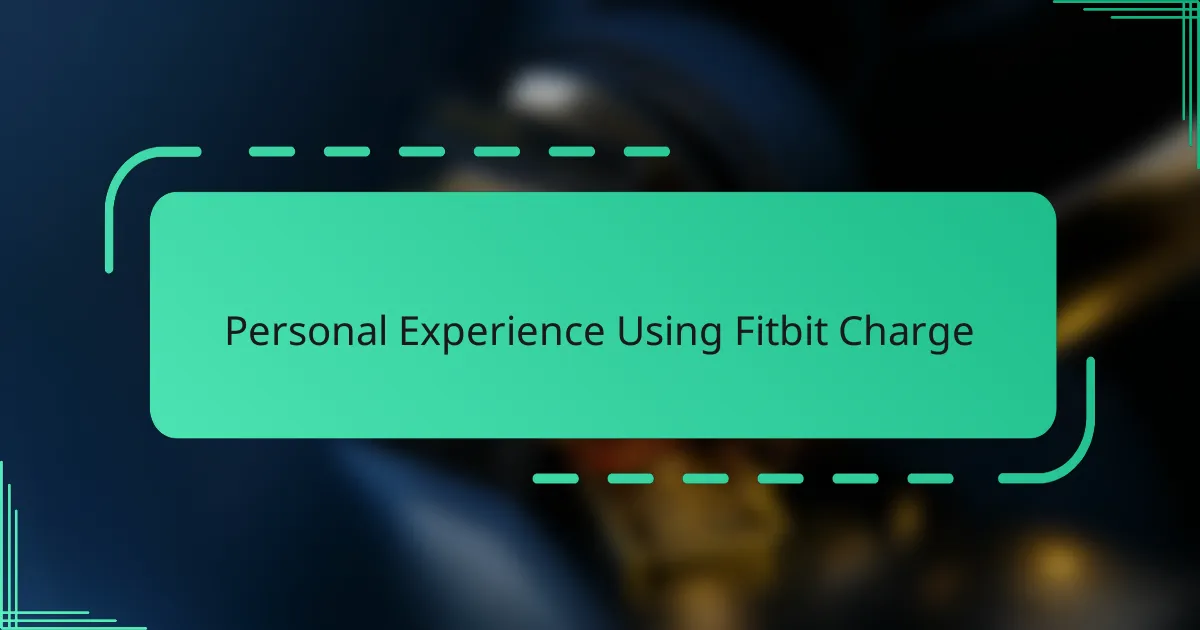
Personal Experience Using Fitbit Charge
Wearing the Fitbit Charge felt surprisingly natural from day one. I remember forgetting I had it on during a long work meeting, and then checking later to see how much I’d moved—it was a small delight that made me smile. Have you ever been caught off guard by a gadget that just fits effortlessly into your routine?
One evening, after a restless night, I turned to the Fitbit’s sleep analysis and discovered patterns I never suspected. It was eye-opening to realize how my late-night screen time had a bigger impact than I had thought. That moment sparked a real change—I started prioritizing winding down earlier, and the data motivated me to stick with it.
What really made an impression on me was how the Fitbit Charge’s reminders felt more like friendly pats on the back than nagging alerts. Instead of guilt, I felt encouraged to take brief walks or relax when needed. Doesn’t it make you want to keep a device that supports your habits instead of criticizing them? For me, that subtle support made all the difference.
![]()
Assessing Daily Performance Tracking
Assessing daily performance tracking with the Fitbit Charge quickly became a revealing experience for me. The way it breaks down my day into measurable chunks—steps taken, calories burned, active minutes—transformed abstract efforts into concrete progress. Have you ever caught yourself wondering if that quick stroll around the block actually made a difference? This device answers that question in real-time and made me appreciate even the small wins.
What truly stood out was how the data nudged me toward consistency without feeling pushy. Some days, the gentle reminders to move felt like a caring friend checking in, rather than a strict coach barking orders. It’s amazing how those little prompts sparked an unspoken accountability that kept me moving throughout the day, even when motivation was low.
On a more personal note, tracking my heart rate continuously gave me surprising insights into how daily stress affected my performance. One afternoon, I noticed my resting heart rate was higher than usual and decided to take a break. That moment showed me that performance tracking isn’t just about activity—it’s about listening to your body and adjusting accordingly. Have you ever experienced that kind of eye-opening feedback from a device? For me, it changed how I approach my daily routine.
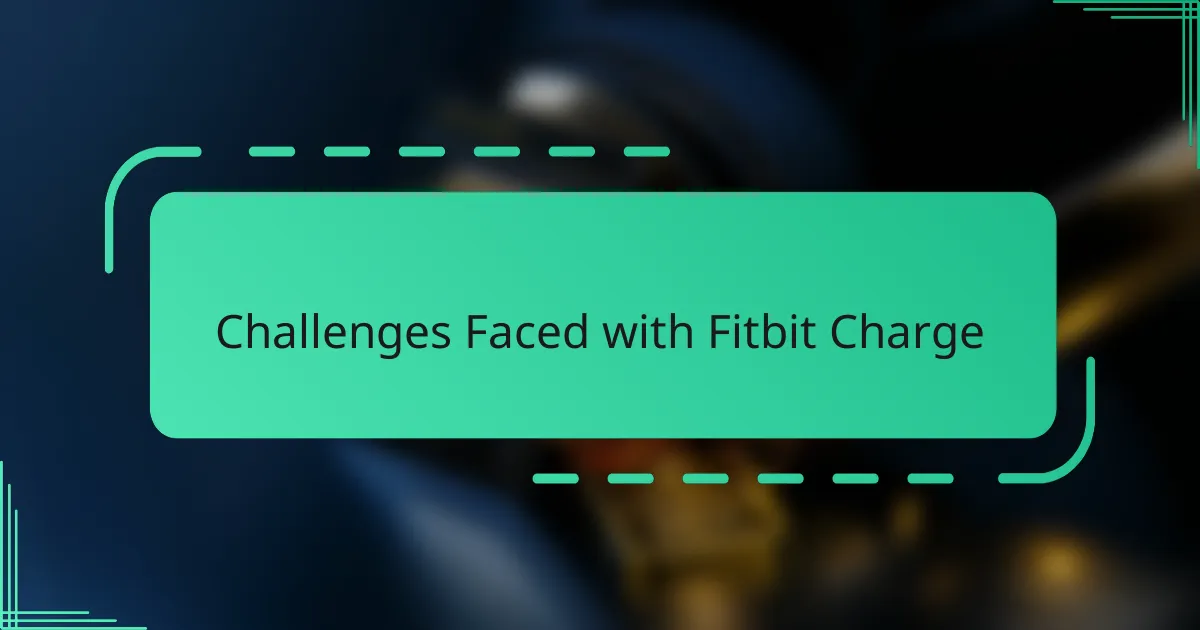
Challenges Faced with Fitbit Charge
One challenge I encountered with the Fitbit Charge was its occasional syncing issues. I remember a few times when my steps and heart rate data didn’t update properly in the app, leaving me puzzled and a bit frustrated. Have you ever felt that disconnect between what you’re seeing on your wrist and what actually shows up on your phone? For me, it was a reminder that even the best tech isn’t flawless.
Battery life, while generally good, sometimes fell short during intense tracking sessions like long hikes or multi-day trips. I found myself anxiously watching the battery percentage drop faster than expected, which took away from fully enjoying the experience. It made me realize how critical reliable battery performance is when you depend on a device all day long.
Another subtle challenge was the fit and comfort over extended wear. Although the design is sleek, there were moments, especially during workouts, when the band felt a bit tight or irritated my skin. Have you noticed how even minor discomfort can distract you from your routine? Paying attention to such details reminded me that comfort is just as important as features in a wearable.
